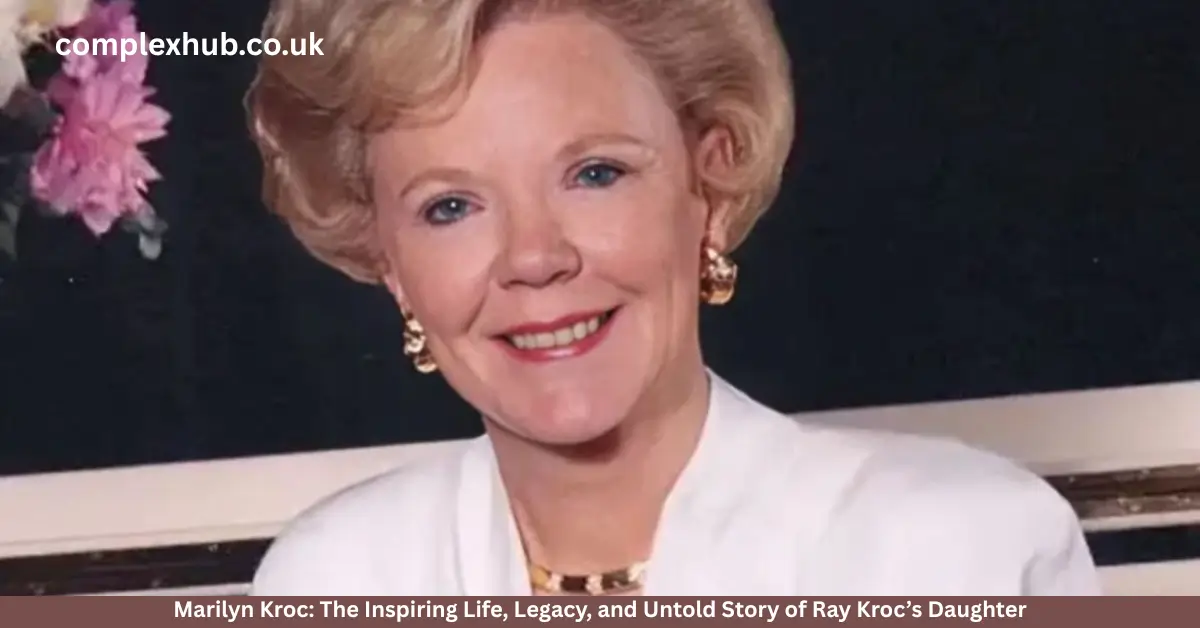
Introduction
Jerome Jesse Berry is a name most people know because of his famous daughter, Academy Award–winning actress Halle Berry. But Jerome’s life — shaped by the Deep South, military service, steady blue-collar work, family turmoil, and eventual illness — is a story in its own right. It’s a tale about resilience, complicated family relationships, and the long arc from pain to partial reconciliation. This article examines Jerome’s life in detail: where he came from, the jobs he held, his relationships and struggles, how his absence and behavior affected his children (especially Halle), and the legacy he left behind.
Early Life and Background
Jerome Jesse Berry was born on August 7, 1934, in Clarksdale, Mississippi — a small city in the Mississippi Delta steeped in African-American history and blues culture. Growing up in that place and era meant Jerome’s childhood unfolded against the backdrop of segregation, economic scarcity, and a community where hard physical work and family bonds were central to survival.
His parents, Robert Kester Berry and Cora Lee Berry, raised him in this context and instilled values of discipline, responsibility, and perseverance. Those early lessons would accompany Jerome into adulthood, though the conditions of the time (limited opportunities, racial injustice, and financial strain) shaped both his options and the difficulties he later faced.
Growing Up in the Segregated South
To understand Jerome’s life you need to understand the environment of the Mississippi Delta mid-20th century. Opportunities were constrained for Black Americans; social and economic mobility was difficult, and the pressures of systemic racism and limited access to education and healthcare were constant. For many men of Jerome’s generation, military service provided a rare chance to gain skills, travel, and build a different life trajectory — a route Jerome would take after finishing high school.
Military Service and Its Impact
After high school, Jerome joined the United States Air Force. For many who enlisted, the military offered structure and steady employment, exposure to different parts of the country (and possibly the world), and practical training that could be useful in civilian life. Military service also often brought a sense of pride and discipline that stayed with veterans throughout their lives.
Although specific details about Jerome’s service record aren’t widely publicized, contemporaneous biographical accounts emphasize that the Air Force period was formative: it gave him more life experience, discipline, and the maturity that would influence his civilian work and relationships.
Career and Working Life
When Jerome left the Air Force and entered civilian life, he pursued steady, practical work to support a family.
Hospital Porter
One of Jerome’s documented occupations was as a hospital porter at a psychiatric hospital in Cleveland, Ohio. Porter work is demanding: long hours, heavy lifting, and a sometimes emotional environment. It required patience and resilience, and it often came with modest pay. Working in a psychiatric facility could be particularly challenging and emotionally draining, yet Jerome remained employed in roles that emphasized care and responsibility.
Bus Driver
He later worked as a bus driver for Bluebird Travel Lines. Driving a bus provided steady income and routine, but it, too, involved long hours and the responsibilities of keeping passengers safe. These roles paint a picture of a man who took on honest, blue-collar work to provide for his family, even if those jobs were far from glamorous.
Financial Background
Jerome’s economic life was modest. Unlike his daughter Halle — who went on to significant wealth and stardom — Jerome did not have a public financial profile or assets reported in the media. His net worth is not publicly documented. The material reality of his life was typical for many working-class Americans: work that paid the bills but left little room for luxuries.
Personal Life and Relationships
Meeting Judith Ann Hawkins
Jerome met Judith Ann Hawkins while both worked at the psychiatric hospital: he as a porter and she as a nurse. They married in the 1960s and became parents to two daughters: Heidi and Halle. The early years of their marriage likely combined hope and everyday struggle: holding down jobs, raising children, and trying to build a future.
Marriage and Family Life
Although Jerome and Judith began their family in optimism, the marriage was later strained by serious problems. Reports and family recounting indicate that Jerome struggled with alcoholism and that domestic abuse occurred. These factors took a heavy toll on the marriage and on family stability.
Struggles with Addiction and Abuse
Addiction and abusive behavior are tragically common issues that destabilize families. In Jerome’s case, they contributed to a difficult home environment and ultimately to the end of his marriage. The emotional cost for the children — especially young Halle — was profound. Childhood instability, exposure to violence, and a parent’s absence are events that shape identity and future relationships.
Divorce and Aftermath
Judith filed for divorce in 1970; the marriage ended, and Jerome became largely absent from the daily life of his daughters. The separation meant Halle and Heidi were raised mostly by their mother, and the absence of their father left emotional scars that would be spoken about publicly decades later by Halle herself.
Second Marriage to Edwina Taylor
Sometime after his divorce from Judith, Jerome remarried; his second wife was Edwina Taylor. Less is publicly known about this marriage, which appears to have been quieter and more private than his first. Jerome spent later years in Ohio away from public scrutiny.
Relationship with His Children
Jerome fathered at least three daughters: Renee (from an earlier relationship), Heidi Berry-Henderson, and Halle Berry. The relationships with these children varied — shaped by divorce, distance, addiction, and later attempts at reconciliation.
Renee Berry
Little public information exists about Jerome’s relationship with Renee. She is less documented in public sources compared with his daughters from his marriage to Judith.
Heidi Berry-Henderson
Heidi, Jerome’s daughter with Judith and Halle’s older sister, grew up primarily without a steady paternal presence. Like Halle, she experienced the consequences of an unstable home and the fallout from her parents’ divorce. Heidi has been mentioned in media accounts largely in connection to the family narrative rather than as a public figure herself.
Halle Berry — The Complicated Father-Daughter Bond
Halle Berry’s relationship with Jerome is the most widely discussed of his parental connections, both because of her prominence and because she has spoken candidly about the emotional impact of Jerome’s behavior and absence. As a child, Halle experienced instability, and her father’s alcoholism and abuse contributed to pain and confusion during formative years.
Yet the relationship was not monolithically negative: before Jerome’s death in 2003, there was a period of reconciliation. Halle has described the complicated emotions that arise from reconciling with an absent or abusive parent — anger, grief, and eventually, a hard-won forgiveness. That evolution reflects personal growth on both sides and shows that relationships, even deeply damaged ones, can sometimes find partial healing.
The Complex Relationship with Halle Berry
Halle’s reflections on her father reveal how parental behavior can inspire resilience and determination as much as hurt. Several themes emerge when we consider Jerome’s impact on Halle’s life:
Absence and Emotional Consequences
Jerome’s absence during much of Halle’s childhood left a void. Children without reliable parental contact often develop questions about self-worth and stability; these emotional patterns can follow into adulthood. Halle’s candor about her childhood indicates that she processed these emotions publicly and used them to inform her personal and professional development.
Trauma, Forgiveness, and Healing
Forgiveness was not immediate. It is a process that took years and included confronting painful memories. Halle’s eventual reconciliation shows the possibility of moving toward closure, even if not all wounds fully heal.
Influence on Career and Character
Halle’s drive and commitment to her craft can be read, in part, as a reaction to early instability — a personal decision to shape a life different from the one she experienced as a child. Her professional accomplishments and public persona reflect resilience and an ability to transform pain into purpose.
Later Years and Health Struggles
In his later life, Jerome lived a quiet existence away from the spotlight in Ohio. He was diagnosed with Parkinson’s disease — a progressive neurological condition that causes tremors, stiffness, and gradual loss of motor control. Parkinson’s is devastating for patients and families alike; it demands medical care, emotional adjustment, and often, a reordering of family roles.
Jerome passed away on January 24, 2003, at Euclid General Hospital in Cleveland at the age of 68. He was buried at Cleveland Memorial Gardens. In the years immediately leading up to his death, reports indicate that father and daughter spent time reconciling, and that period provided some measure of closure for both.
Death and Burial
Jerome’s passing in 2003 marked the end of a life marked by struggle and workaday perseverance. His burial in Cleveland closed the public portion of the family’s story but left a legacy in the private emotional lives of his children, particularly Halle, who has continued to speak about her father in interviews and tributes with a mixture of sorrow and compassion.
Legacy and Impact on Family
Jerome’s legacy is complicated. He is not remembered primarily for public achievements, wealth, or fame, but for the role he played (both absent and present) in shaping the lives of his children. His story touches on broader social issues:
- Addiction and family dynamics. Jerome’s struggles with alcoholism highlight the way substance abuse damages intimate relationships and long-term family health.
- Absence and resilience. His limited presence in his daughters’ upbringing contributed to emotional hardship, but also to the development of resilience in Halle and her sister.
- Possibility of reconciliation. The late reconciliation with Halle suggests that relationships, while damaged, can sometimes be repaired to a degree — an important human lesson about forgiveness and complexity.
- Working-class life and dignity. Jerome’s occupations represent the millions who work quietly to support families without recognition. His life is a reminder that dignity and struggle often live side by side.
For Halle, Jerome’s story has been woven into her own narrative: a public figure who rose from complicated roots to prominence, and who has publicly recognized the mixed legacy of her father.
Jerome Jesse Berry’s Net Worth and Financial Background
Jerome lived and worked in modest, working-class roles. He did not accumulate public wealth or assets tracked by media outlets. Unlike a celebrity profile that lists investments and property, Jerome’s financial life was private and typical of many Americans who hold steady but modest employment. There is no reputable public record indicating significant net worth at the time of his death.
Contrastingly, Halle Berry’s success in Hollywood led to significant financial prosperity; this contrast sometimes appears in retrospectives that underscore how different a child’s path can be from a parent’s.
Broader Social Lessons: Addiction, Forgiveness, Resilience
Jerome’s life invites us to reflect on societal and familial lessons:
- Addiction is a disease that affects whole families. Families need resources, understanding, and treatment infrastructure to heal.
- Forgiveness is a process, not a one-time event. Healing requires time, courage, and often, mutual effort.
- Resilience often grows from adversity. Many who achieve significant success cite early struggle as a motivating force.
- Working-class contributions matter. Everyday labor sustains families and communities even when it goes unheralded.
These themes are not abstractions; they are lived realities for countless families, and Jerome’s story humanizes them.
Conclusion
Jerome Jesse Berry was a man whose life was shaped by the constraints and realities of his time: the segregated South, military service, steady labor, personal demons, and a complicated family life. His absence and actions unquestionably affected his children, particularly Halle Berry, who converted pain into purpose and achievement. Yet Jerome’s story does not end in one-dimensional condemnation or praise. It is a complex narrative of hardship, struggle, occasional reconciliation, and the quiet dignity of everyday work.
In the end, Jerome’s legacy is neither celebrity nor material wealth. It is the imperfect human story he left behind — a story that helped shape a star, taught lessons about forgiveness and resilience, and remains a quiet testament to the tangled bonds of family.
Quick Facts about Jerome Jesse Berry
- Born August 7, 1934, in Clarksdale, Mississippi.
- Served in the United States Air Force.
- Worked as a hospital porter and later as a bus driver for Bluebird Travel Lines.
- Married first to Judith Ann Hawkins (two children: Heidi and Halle); had at least one other daughter, Renee, from an earlier relationship; later married Edwina Taylor.
- Divorced from Judith in 1970; largely absent from his daughters’ lives for years.
- Diagnosed with Parkinson’s disease; died January 24, 2003, at age 68.
- Buried at Cleveland Memorial Gardens, Ohio.
- Net worth: not publicly documented; lived a modest, working-class life.
FAQs About Jerome Jesse Berry
Who was Jerome Jesse Berry?
Jerome Jesse Berry was the father of actress Halle Berry. He served in the U.S. Air Force and later worked in honest, blue-collar jobs such as a hospital porter and bus driver. His life included personal struggles, family turmoil, and a late reconciliation with his daughter.
When and where was Jerome Berry born?
He was born on August 7, 1934, in Clarksdale, Mississippi.
Who were Jerome Berry’s wives and children?
He was first married to Judith Ann Hawkins; they had two daughters, Heidi and Halle. He had another daughter, Renee, from an earlier relationship, and later married Edwina Taylor.
Why was Jerome mostly absent from Halle Berry’s childhood?
Jerome struggled with alcoholism and domestic problems that contributed to the breakdown of his marriage and his limited presence in his daughters’ lives after the divorce in 1970.
Did Jerome Jesse Berry reconnect with Halle later in life?
Yes. In the final years before his death in 2003, Jerome and Halle had a period of reconciliation that brought some closure.
What caused Jerome Jesse Berry’s death?
Jerome died of complications related to Parkinson’s disease on January 24, 2003.
What was Jerome’s occupation?
He worked as a hospital porter and later as a bus driver — steady, working-class jobs that supported his family.
Read More :- Debraca Denise Now





